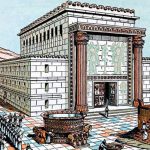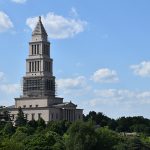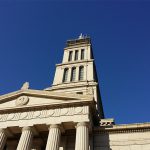CEDRUS LIBANI 1003
IS NOTHING
WITHOUT PEOPLE
“Any man can be a D.C. Freemason, but not every man can be one.”
WHAT ARE THE DEGREES OF FREEMASONRY?
There are three degrees of Freemasonry: Entered Apprentice, Fellowcraft, and Master Mason. These degrees are the three ceremonial stages that a man must complete to become a full member of the Masonic fraternity. Collectively, these degrees are known as the symbolic lodge (often called blue lodge).
The Masonic degrees are loosely based upon the journeyman system, which was used to educate Medieval craftsmen. At each educational stage, a craftsman was required to achieve proficiency before moving to the next stage. Symbolically, the degrees represent the three stages of human development: youth, manhood, and age. By advancing through the degrees, a Freemason learns the moral and ethical lessons of the Masonic rite.
WHAT IS THE HIGHEST RANK IN FREEMASONRY?
The highest rank in Freemasonry is the third degree, that of the Master Mason. While some Masonic organizations offer additional degrees that explore the teachings of Freemasonry in further depth, those degrees are not considered to be higher than the symbolic lodge degrees.
HOW DO I BECOME A MASTER MASON?
To become a Master Mason, you must complete the three degrees of the symbolic lodge. Once you have completed the third degree, you become a full member of Freemasonry, enjoying both the rights and responsibilities of membership.
To begin your journey to becoming a Master Mason, submit a petition for membership at a Masonic lodge in your area. Visit our Get in Touch page to take the first step.




